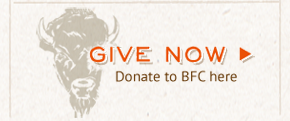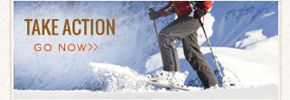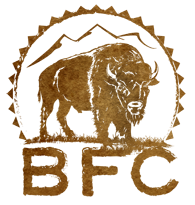Worse than Decimation for our National Mammal
dec·i·mate ˈdesəˌmāt
verb
1. kill, destroy, or remove a large percentage or part of.
"the project would decimate the fragile wetland wilderness”
2. historical kill one in every ten of (a group of soldiers or others) as a punishment for the whole group.
The historical definition of the word “decimate” arguably only applies to killing one of every ten soldiers as a punishment to the rest of an army. But in a broader and modern sense, the definition has changed to mean that a large proportion of a population is killed or otherwise removed. In either sense of the word, what is happening to the Yellowstone National Park population of bison, a.k.a. buffalo, is worse than decimation. This year alone, under the Interagency Bison Management Plan, nearly 1,200 buffalo have been removed from the estimated population of 4,800. That means that one in four buffalo have been killed, a ratio that is far worse than decimation.

Photo by Stephany Seay, Buffalo Field Campaign.
This has been done in an effort to reduce the population to a mere 3,000, a number based on a shot-in-the-dark carrying capacity estimate made many years ago that was not based on any science. Despite this, the Montana Department of Livestock and the livestock industry has repeatedly cited this number as if it were gospel and Yellowstone National Park has vigorously killed far more than the 600-900 stated goal they agreed to last fall.
While Yellowstone National Park has led the killing, Dan Wenk, the Park Superintendent, is admitting (video) that the real issue is not brucellosis rather, it is competition for grass on public lands. He says that bison are being "unfairly targeted" (Mountain Journal - Are Elk Or Yellowstone Bison The Real Disease Threat?, April 3, 2018) as the vector for the disease while elk present a greater risk to disease spread than bison. These are crocodile tears. If the Park truly stands by these words, then the Interagency Bison Management Plan states in the summary that they can simply withdraw from the Plan. It's clear that the Park Service simply doesn't want to offend the livestock industry.
Spring Has Come - Drive Safely
But spring has come and there is a respite of sorts while pregnant mothers migrate to the areas where grass is sprouting and there is food for them to replenish their bodies after a tough winter so that they can provide the critical milk their calves will need to begin life. The first calves will show up any day now and we can once again celebrate their presence on Horse Butte where they are relatively safe from harassment now that this area has been declared year-round habitat.
In Gardiner, where Yellowstone National Park has closed the Stephens Creek trap and buffalo are migrating back into the Park where there is more food, we have closed up our camp for the season. Of course, we will return if conditions change but things look to be calm there and the buffalo are safe from government harassment and capture.

Photo by Stephany Seay, Buffalo Field Campaign.
We now turn our focus to West Yellowstone where herds are leaving the Park and crossing Highway 191. We are deploying our volunteers with our reflective signs and vests so that buffalo can cross the highway more safely. Unfortunately, we can't be there for all of the crossings. Already this spring, there have been 6 buffalo hit and killed in the night when they are difficult to see. Even though the Montana Department of Transportation has set up flashing digital signs warning drivers that there are buffalo on the road, some drivers continue to drive too fast through the area and collide with them. A semi hit and killed 5 in just one incident on Tuesday night. Please drive slowly!
Someday we hope to convince the Montana Department of Transportation to construct wildlife crossing bridges along this stretch of highway 191 so that buffalo, elk, grizzlies, wolves, and all manner of other wildlife can cross the highway in safety.
Custer Gallatin National Forest Forest Plan Revision Meetings April 21 & 28 in Bozeman and Billings
The Custer Gallatin National Forest will be holding public workshops focussing on the alternatives they are considering for the Forest Plan Revision. The agenda states that the meeting focus will be "Land Allocations such as Recreation Emphasis Areas, Backcountry Areas & Recommended Wilderness Areas & their possible variations; along with uses in those areas. We will have electronic mapping tables and maps on hand.” They go on to say that "Meetings will focus on high-level alternatives and landing at a solid place to start analyzing these alternatives. We won’t be getting into every detail, but are looking to ensure the spectrum of comments we heard is incorporated and that people are able to help give critical feedback in the further development of these alternatives.”
You can attend these meetings in person or online. Be sure to tell them that you want the U.S. Forest Service to list bison as a Species of Conservation Concern and that they should be allowed to use all U.S. Forest Service lands.
April 21 - Bozeman at the Hilton Garden Inn, Larkspur Room (2023 Commerce Way)
April 28 - Billings at the Bighorn Resort, Broso and Bighorn Rooms (1801 Majestic Lane)
Online
https://usfs.adobeconnect.com/cgpm-500/
Agenda (subject to change)
- Welcome, Coffee & Mingle - 9:30 a.m. & Youth Artwork Poster Display - "What does you National Forest Mean to You?" - Vote here by 4/18.
- Workshop Starts - 10:00 a.m.
- Intro & Presentation - Virginia Kelly, Forest Plan Revision Team Leader
- Walk thru Alternatives 10:15 - 11:00
- Smaller breakouts, Focus - Alternatives 11:15 - 12:45/1
- with Place-based mapping tables (GIS specialists)
- Pre-work anticipated - please stay tuned *
Synthesis and Close-out - 1/1:30
Attend virtually if unable to travel: https://usfs.adobeconnect.com/cgpm-500/
WILD IS THE WAY ~ ROAM FREE!







